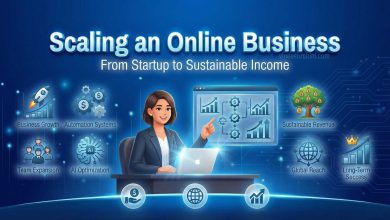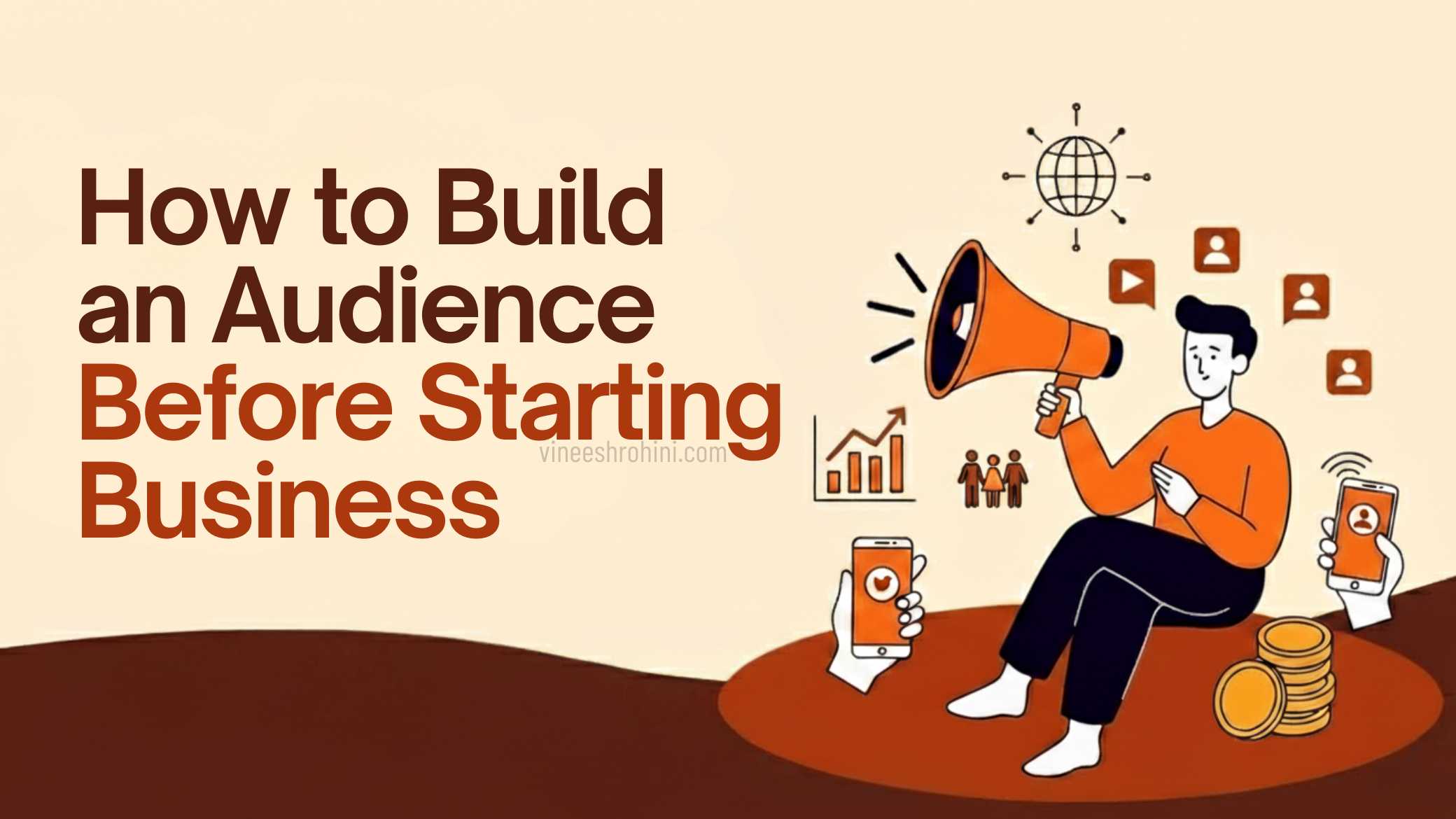How To Convert Website Visitors into Customers – Comprehensive 2025
Website Visitors into Customers : In today’s digital-first world, businesses spend a significant amount of time and money driving traffic to their websites. However, traffic alone does not guarantee success. The real goal is converting those website visitors into paying customers. Conversion is the lifeblood of any online business—whether it’s an e-commerce store, SaaS platform, affiliate site, or a digital product marketplace.
Table of Contents
High website traffic with low conversion rates indicates a problem in the user journey, messaging, or offer. Hence, understanding the art and science of converting website visitors into customers is crucial for sustained business growth.
Understanding the Visitor’s Journey

Before we can talk about conversions, we must understand the visitor’s journey. It generally involves five stages: awareness, interest, consideration, intent, and purchase. Each stage represents a mindset that the visitor is in, and your website should address every stage effectively.
Also Read : 10 Best Marketplaces for Buying an Online Business
For example, someone in the awareness stage might be reading a blog post, while someone in the intent stage is comparing products or reading reviews. Your content, user experience, and calls-to-action (CTAs) must align with these stages to push users toward a buying decision.
Optimize for First Impressions: Website Design & Speed
First impressions matter. If your website takes more than a few seconds to load, many visitors will leave without exploring. According to G, the probability of bounce increases by 32% as page load time goes from 1 to 3 seconds. Additionally, a cluttered, outdated, or non-responsive design can make your brand look untrustworthy. A sleek, mobile-optimized, fast-loading site with intuitive navigation creates a positive experience and keeps users engaged. Investing in quality hosting, clean design, and performance optimization tools is foundational to increasing conversions.
Use Clear and Compelling Calls-to-Action (CTAs)
One of the most common mistakes businesses make is hiding or confusing their CTAs. A clear and compelling CTA guides your visitor to the next step, whether that’s signing up for a newsletter, downloading an eBook, or making a purchase. CTAs should be prominently placed, action-oriented, and benefit-focused. For instance, instead of “Submit,” use “Get My Free Guide” or “Start Your Free Trial.” A/B testing different CTA designs, placements, and text can reveal what drives better engagement and higher conversion rates.
Leverage Social Proof and Testimonials
People trust other people more than brands. That’s why social proof is a powerful psychological trigger. Displaying reviews, testimonials, case studies, trust badges, and user-generated content helps reassure visitors that others have had a positive experience with your product or service. Integrate star ratings, customer logos, and even real-time purchase notifications (“John just bought this product”) to reinforce credibility. Video testimonials can be even more impactful, as they humanize your brand and build authenticity.
Offer Live Chat and Support Options
Many visitors abandon websites simply because they have unanswered questions. Offering live chat support can dramatically reduce drop-offs and increase trust. With tools like Drift, Intercom, or Tidio, you can provide real-time assistance, capture leads, and automate answers to common questions. Additionally, having visible support options like contact forms, email addresses, and a help center ensures that users know where to go if they face issues. This transparency builds trust and confidence in your business.
Create a Compelling Value Proposition
Your value proposition is the reason a visitor should choose your offering over the competition. It should be clear, concise, and visible above the fold on your homepage or landing page. It answers the visitor’s core question: “What’s in it for me?” Whether you’re selling a product, service, or subscription, your value proposition should focus on the unique benefits, features, and outcomes your customers will experience. Strong headlines, subheadings, and benefit-driven bullet points can effectively convey this message.
Build Trust with Transparency
Trust is the foundation of conversions. If users doubt your intentions, security, or legitimacy, they will leave. Clearly display your privacy policy, terms and conditions, and refund or return policy. Use HTTPS to secure your site and showcase secure payment options. Be honest about pricing, shipping costs, and delivery times. Provide product guarantees or free trials where applicable. Transparency eliminates uncertainty and encourages hesitant visitors to take action.
Use Behavioral Retargeting Techniques

Not every visitor will convert on their first visit. That’s where retargeting comes in. By using pixels or cookies, you can show ads to previous visitors on platforms like FB, Insta, and G. These reminders can highlight specific products they viewed, offer discounts, or direct them to a limited-time offer. Retargeting keeps your brand top-of-mind and brings warm leads back to your site with a higher likelihood of conversion.
Segment Your Audience for Personalized Experiences
Not all visitors are the same, so your website shouldn’t treat them the same. Use behavioral analytics, geo-targeting, and user segmentation to personalize the experience. For instance, show different homepage banners to new vs. returning users, or recommend products based on browsing history. Personalized email follow-ups, on-site recommendations, and dynamic landing pages improve relevance and boost conversion rates by making users feel understood.
Simplify Your Checkout Process
A complex checkout process is one of the biggest conversion killers in e-commerce. To minimize cart abandonment, make the checkout process as smooth as possible. Offer guest checkout, reduce the number of form fields, provide multiple payment options, and show a progress indicator. Display shipping costs upfront, include trust seals, and offer support throughout the checkout. Speed, simplicity, and transparency are key to converting browsers into buyers.
Use Exit-Intent Popups Strategically
Exit-intent popups are triggered when a visitor is about to leave your website. These popups can offer a last-minute incentive such as a discount code, free download, or newsletter subscription. While they should be used carefully to avoid annoyance, well-designed exit popups can recover lost conversions and collect leads that can be nurtured via email marketing.
Implement Email Capture and Lead Nurturing
Many visitors are not ready to buy immediately, but that doesn’t mean they’re lost. Offering lead magnets such as free eBooks, webinars, or discount codes in exchange for email addresses allows you to nurture them over time. Use automated email sequences to deliver value, educate your audience, and guide them toward a purchase. Email marketing remains one of the most cost-effective ways to convert leads into customers when done right.
Create High-Converting Landing Pages

Landing pages are focused, distraction-free environments designed to get visitors to take a specific action. Each landing page should have one goal, one CTA, and one message. Whether it’s downloading a lead magnet, signing up for a demo, or making a purchase, landing pages outperform generic web pages in conversion rates. Use compelling headlines, engaging visuals, benefit-driven copy, and social proof to increase effectiveness.
Analyze Data and Optimize Continuously
Conversion optimization is an ongoing process. Use tools like G Analytics, Hotjar, Crazy Egg, and A/B testing software to understand user behavior. Track metrics like bounce rate, time on page, scroll depth, and tap-through rates. Identify bottlenecks in your funnel and test different variations of headlines, CTAs, layouts, images, and offers. Continuously optimize based on data rather than assumptions to increase your conversion rate over time.
Use Video Content to Engage and Educate
Videos are highly effective in building trust, explaining complex products, and keeping visitors engaged. Use explainer videos, product demos, testimonials, and tutorials to showcase your offerings. Place videos on key landing pages, product pages, and even within your blog posts. Keep them short, professional, and focused on benefits to drive action.
Incorporate FOMO and Urgency
Fear of missing out (FOMO) and urgency are powerful motivators. Use countdown timers, limited-time offers, flash sales, and low-stock alerts to push hesitant visitors toward action. However, these tactics should be used ethically—false scarcity can harm trust and brand credibility. When real and authentic, urgency compels users to act faster and improves conversion rates.
Use Clear and Simple Language
Your website copy should be easy to understand, direct, and focused on the user. Avoid jargon, fluff, and overly complex sentences. Instead, use plain language that communicates benefits, solves problems, and guides users to action. Think of it as a conversation—speak in your customer’s language, address their pain points, and explain how you can help.
Deliver an Omnichannel Experience
Today’s customer journey spans multiple platforms—desktop, mobile, email, social media, and more. Ensure consistency in your branding, messaging, and offers across all channels. Use cross-device tracking and attribution models to understand how users move through your funnel. A seamless omnichannel experience increases trust, retention, and ultimately conversions.
Build Trust Through Content Marketing
Content marketing isn’t just about attracting traffic—it’s about building authority and trust. Publish helpful blog posts, how-to guides, comparison pages, case studies, and video tutorials that educate your audience and solve their problems. Content positions you as an expert, keeps visitors engaged longer, and helps them make informed buying decisions.
Leverage Influencers and Affiliates
Influencers and affiliates can bring warm traffic that’s easier to convert. Collaborate with niche influencers to promote your brand authentically. Set up an affiliate program where partners can earn commissions for driving sales. These trusted voices act as third-party endorsements and shorten the conversion cycle for their audiences.
Provide Post-Purchase Follow-Up and Upsells
Conversion doesn’t end at the sale—it’s just the beginning. Follow up with customers via email to confirm orders, request reviews, and offer related products or upgrades. A good post-purchase experience increases the chances of repeat purchases, referrals, and long-term customer loyalty.
Website Visitors into Customers – Conclusion :
Converting website visitors into customers is not about quick hacks—it’s about creating a smooth, engaging, and trustworthy user experience from the first tap to final purchase.
Buy Now : Ecommerce Website With 100 Products
It requires alignment between marketing, design, copy, support, and analytics. By understanding your audience, optimizing every touchpoint, and consistently testing improvements, you can significantly increase your conversion rate and grow your business sustainably.
Final Thoughts

Whether you’re a startup or an established brand, the principles of conversion optimization remain the same: understand your user, remove friction, build trust, and deliver value. With the right combination of strategy, tools, and execution, your website can become a powerful engine that turns visitors into loyal, paying customers.
Keywords : Website Visitors into Customers – Website Visitors into Customers 2025 , Website Visitors into Customers in simple steps, Website Visitors into Customers Guide



